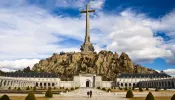It was a heresy that attacked Mary's title as "Mother of God" but it was also a subtle attack against the Incarnation of Christ. With a better understanding of the Incarnation - that Jesus is truly God and man, the faithful in the fifth-century became aware of other consequences. If Jesus is truly God and Mary was His mother, then Mary must be the "Theotokos", God-bearer, or in more western terms, Mother of God. St. Ephrem the Syrian wrote hymns praising Mary with langauge rivialing St. Alphonsus Liguori. Around 428-429 A.D., the newly-consecrated Bishop of Constantinople, Nestorius, had enough of this. From the pulpit, he attacked the title "Theotokos" and claimed that even though Mary is the Mother of Christ, she cannot be the Mother of God. Shortly afterwards, the Bishop of Alexandria, Cyril, wrote a letter to Nestorius in order to correct his error. After receiving his reply, Cyril wrote a letter to Pope Celestine and forwarded Nestorius' response. Cyril submitted both his writings and Nestorius' response for papal judgement. After examining the documents, Pope Celestine condemned Nestorius' teaching and ordered him to recant in ten days. The pope also authorized Cyril to receive the recantation or else condemn and depose Nestorius from his See. Nestorius refused to recant and published a clearer condemnation against the title "Theotokos." He wrote: "A mother cannot bear a Son older than herself." "If Mary is called Mother of God, she is made a Goddess." "The man Jesus... is the temple, the vesture of the Word... God did not die." and so on. Nestorius refused to submit to Cyril and requested a General Council to discuss this issue. A General Council was called and organized. It openned on 22 June 429, but Nestorius refused to personally attend. The Council condemned Nestorius and his followers. The Council's decrees and definitions were approved by Pope Sixtus III since Pope Celestine had already died. Nestorius fled to Persia and gained a large, powerful following. Only centuries later, the Muslims finally destroyed his sect. Nestorius claimed that Christ's human nature was only the temple of the Godhead, but he also differentiated between the acts of Christ's human nature (e.g. Christ dying on the Cross) and acts of Christ's Divine nature (e.g. God did not die.). The main problem with Nestorius is that free acts originate from persons and not from natures. What Nestorius called "natures" should have been called "persons." His error was to divide Christ into two persons - human and divine. Christ is only one Person and Mary is the mother of that Person. Mothers give birth to persons and not natures.
Printed with permission from A Catholic Response, Inc.











